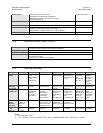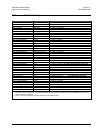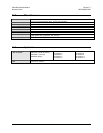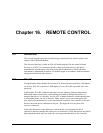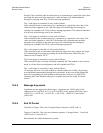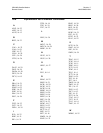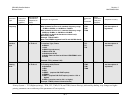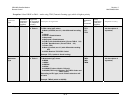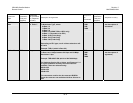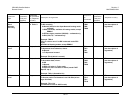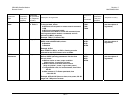
CDM-600 Satellite Modem Revision 7
Remote Control MN/CDM600.IOM
16–5
Second, if the controller sends an instruction to set a parameter to a particular value, then,
providing the value sent in the argument is valid, the target will acknowledge the
message by replying with TFQ= (with no message arguments).
The ? code (target to controller) is only used as follows:
If the controller sends an instruction to set a parameter to a particular value, then, if the
value sent in the argument is not valid, the target will acknowledge the message by
replying (for example) with TFQ? (with no message arguments). This indicates that there
was an error in the message sent by the controller.
The * code (target to controller) is only used as follows:
If the controller sends an instruction to set a parameter to a particular value, then, if the
value sent in the argument is valid, BUT the modem will not permit that particular
parameter to be changed at that time, the target will acknowledge the message by
replying (for example) with TFQ* (with no message arguments).
The ! code (target to controller) is only used as follows:
If the controller sends an instruction code which the target does not recognize, the target
will acknowledge the message by echoing the invalid instruction, followed by the !
character with. Example: XYZ!
The # code (target to controller) is only used as follows:
If the controller sends a correctly formatted command, BUT the modem is not in remote
mode, it will not allow reconfiguration, and will respond with TFQ#.
The ~ code (target to controller) is only used as follows:
If a message was sent via a local modem to a distant end device or ODU, the message
was transmitted transparently through the local modem. In the event of the distant-end
device not responding, the local modem would generate a response e.g. 0001/RET~,
indicating that it had finished waiting for a response and was now ready for further
comms.
16.5.5 Message Arguments
Arguments are not required for all messages. Arguments are ASCII codes for the
characters 0 to 9 (ASCII 48 to 57), A to Z (ASCII 65 to 90), period (ASCII 46), space
(ASCII 32), * (ASCII 42), + (ASCII 43), - (ASCII 45), / (ASCII 47), and comma
(ASCII 44).
16.5.6 End Of Packet
Controller to Target: This is the ‘Carriage Return’ character (ASCII code 13)
Target to Controller: This is the two-character sequence ‘Carriage Return’, ‘Line Feed’.
(ASCII code 13, and code 10.)
Both indicate the valid termination of a packet.



